Killer Whale
Suborder: Odontoceti, Family: Delphinidae
- Appearing Season
- late May to July

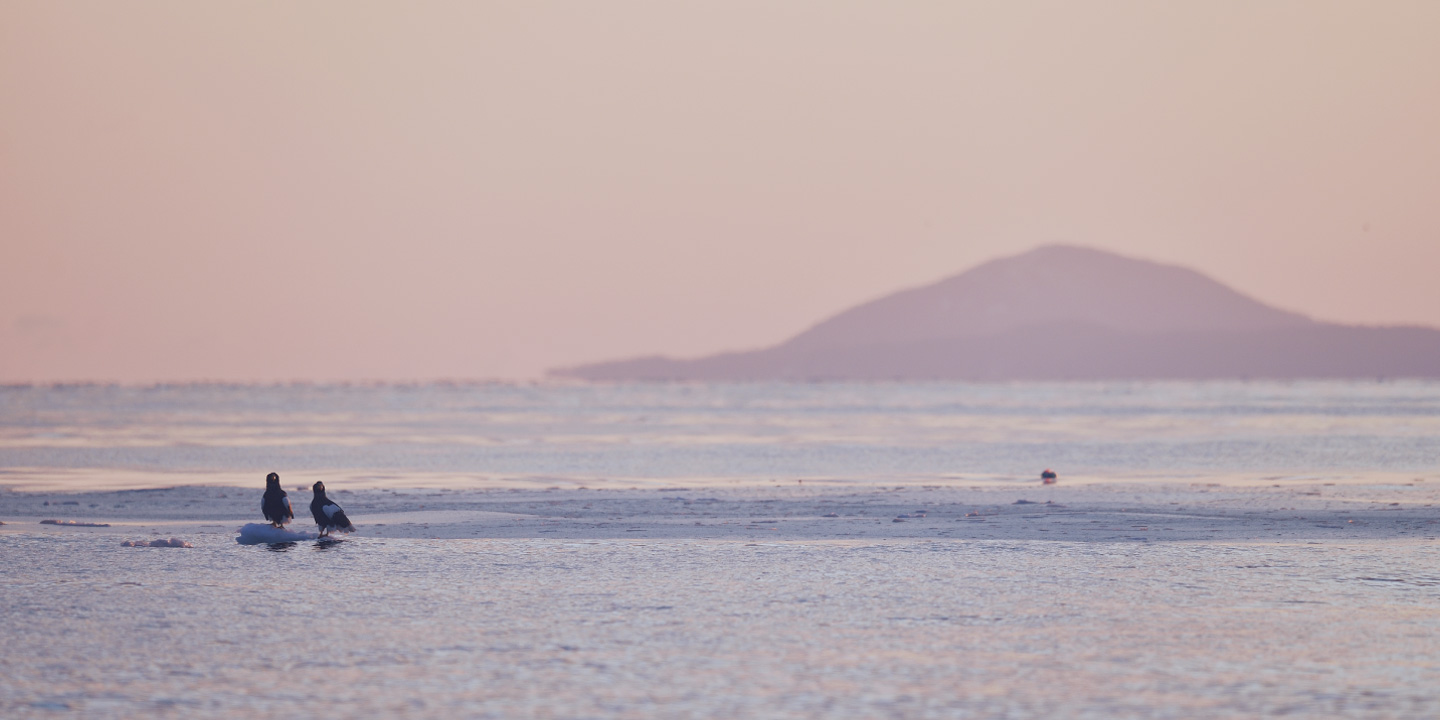
The real pleasures of this nature watching in Rausu Coast and Nemuro Strait are discovering the wildlife, drift ice, and viewing the magnificent scenery of the Shiretoko Peninsula on the west and Kunashir Island (one of the Northern Territories) on the east.
Drift ice comes and carries plankton in winter, fish gathers under the ice seeking for the plankton, and whales and dolphins come to hunt the fish.
This rich environment brings many kinds of marine creatures such as Dall's porpoises, shearwaters, sperm whales, baird's beaked whales, and minke whales.
During the drift ice season, this place becomes the world's best wintering place for sea eagles and white-tailed sea eagles.
The mutual relationship between the marine ecosystem created by drift ice and the terrestrial ecosystem carrying on from the primitive age is the "Life" of Shiretoko.
You get to feel Mother Nature at the sea through the encounters with this wild life.
You will see why Shiretoko was registered as a World Natural Heritage site.
The creatures seen in Shiretoko, Rausu. Use it as trivia of animal watching.
| Jan. | Feb. | Mar. | Apr. | May | June | July | Aug. | Sept. | Oct. | |
|---|---|---|---|---|---|---|---|---|---|---|
| Killer Whale12,20,21,21,0,0 | ||||||||||
| Minke Whale12,15,16,18,0,0 | ||||||||||
| Sperm Whale20,29,19,19,30,30 | ||||||||||
| Dall's Porpoise19,30,13,18,0,0 | ||||||||||
| Shearwater13,20,12,12,21,24 | ||||||||||
| Steller’s Sea Eagle1,8,0,0,0,0 | ||||||||||
| White-Tailed Eagle1,8,0,0,0,0 |
The creatures seen in Shiretoko, Rausu. Use it as trivia of animal watching.
Click to see the detail.
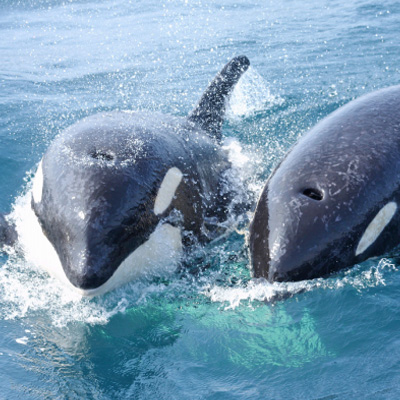
Suborder: Odontoceti, Family: Delphinidae
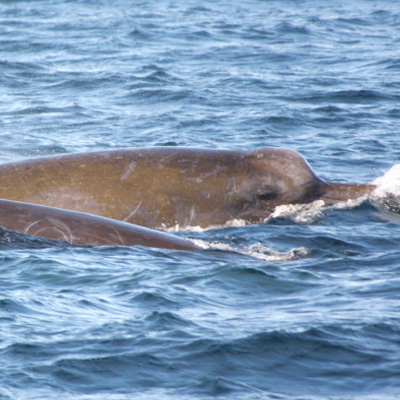
Suborder: Odontoceti, Family: Ziphiidae
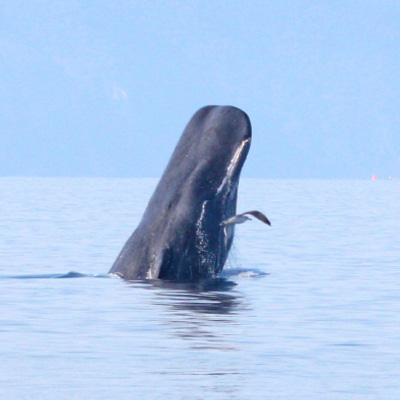
Suborder: Odontoceti, Family: Physeteridae
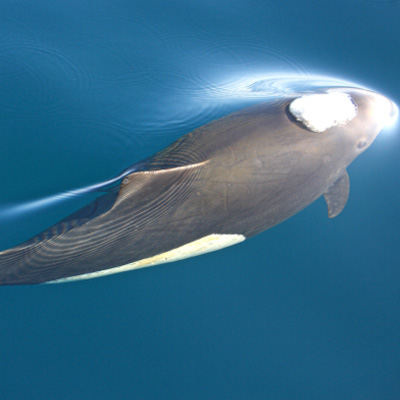
Suborder: Odontoceti, Family: Phocoenidae
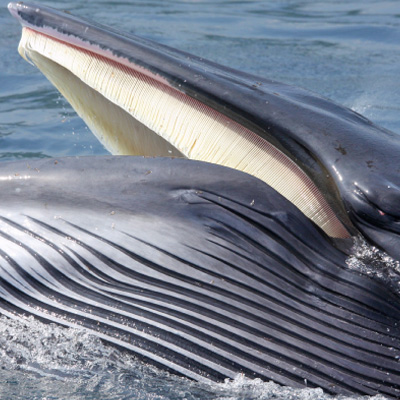
Suborder: Mysticeti, Family: Balaenopteridae
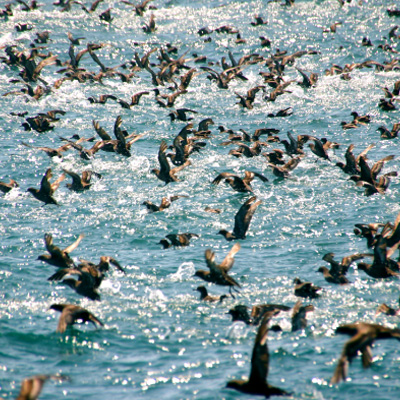
Order: Procellariiformes, Family: Procellariidae
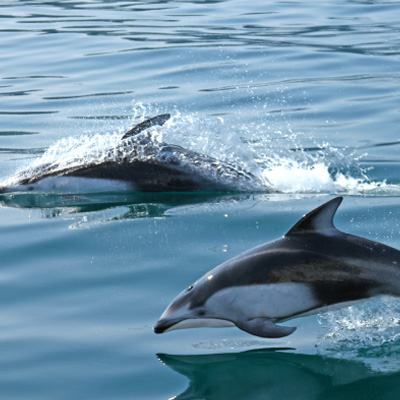
Suborder: Odontoceti, Family: Delphinidae
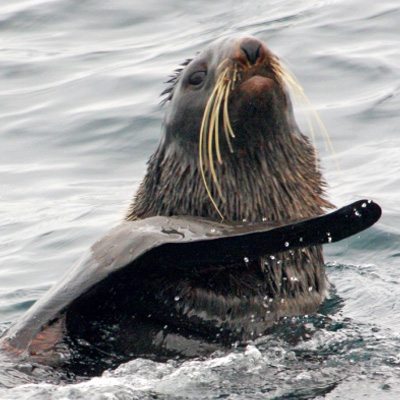
Suborder: Caniformia, Family: Otariidae
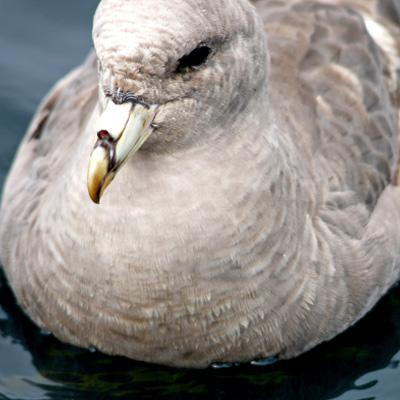
Order: Procellariiformes, Family: Procellariidae
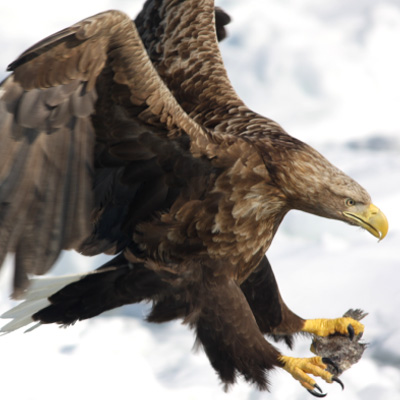
Order: Accipitriformes, Family: Accipitridae
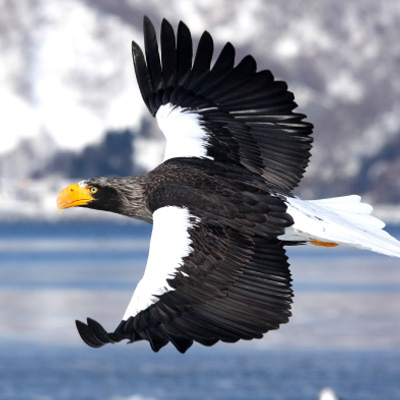
Order: Accipitriformes, Family: Accipitridae
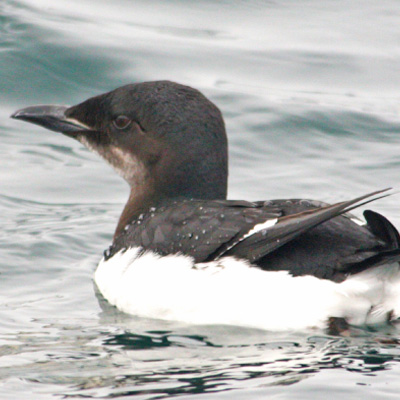
Order: Charadriiformes, Family: Alcidae
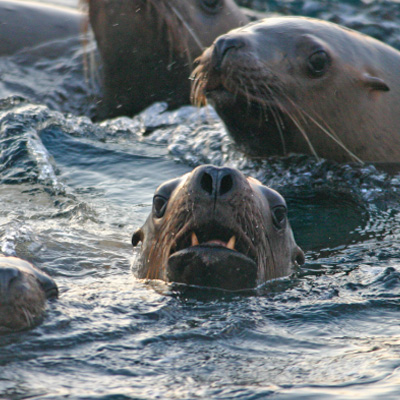
Suborder: Pinnipedia, Family: Otariidae
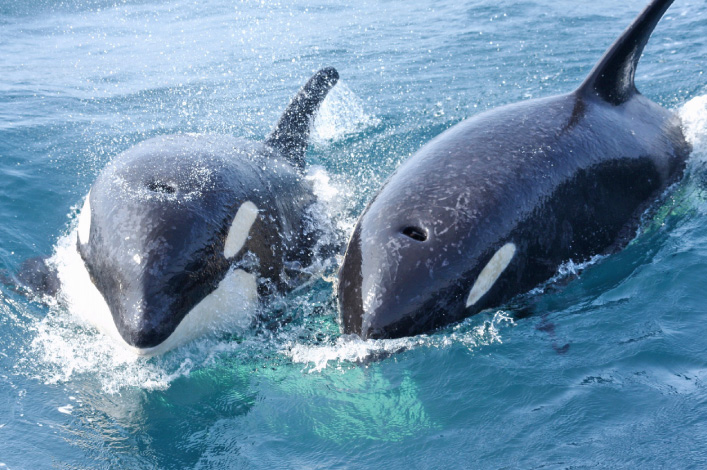
Suborder: Odontoceti, Family: Delphinidae
Killer whales, the king in the marine ecosystem, feed on seals and penguins and sometimes attack whales in groups. The way they play with prey by tossing and flipping around shows that they're the "Gang in the Sea." They're highly social that they hunt and share prey in groups. Breaching and hopping, they actively move around and swim the fastest among mammals.

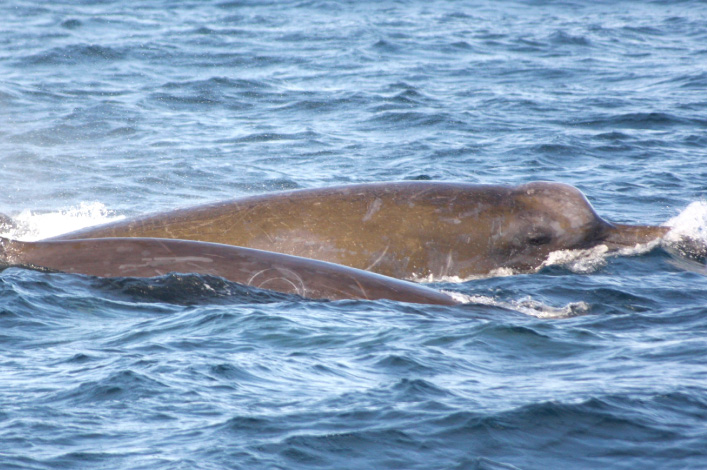
Suborder: Odontoceti, Family: Ziphiidae
Baird's beaked whales whose length is 11 - 12m (36 - 39 ft) are the largest members of the beaked whale family have a relatively long beak. Their lower jaw is longer than their upper jaw, so their lower front teeth are visible even when their mouth is closed. Their Japanese name is "Wooden Hammer Whales" because of this unique beak like a wooden hammer. There're still a lot of unrevealed facts about their behavior. They appear in Nemuro Strait in groups.

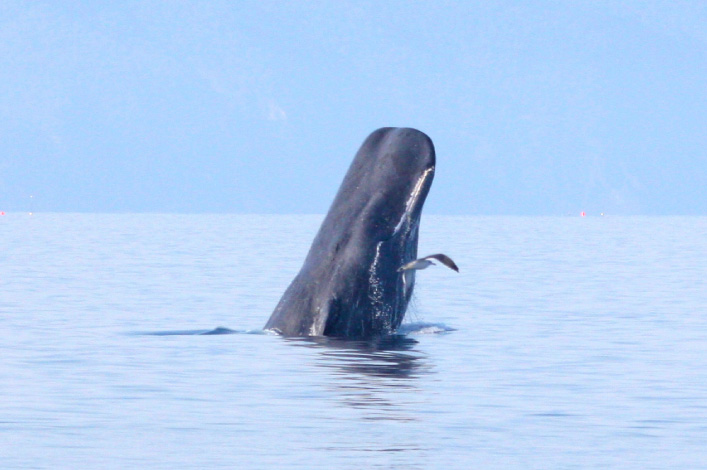
Suborder: Odontoceti, Family: Physeteridae
Sperm whales are classified into Odontoceti meaning toothed whales and have a distinctive block-shaped head. Male sperm whales are physically mature at about 18 m (59 ft) in length. Their blowhole is located close to the front of the left-side head, so they blow spray diagonally to the left front. Sperm whales are the deepest diving whales, and their dives can last more than an hour. The timing when they surface to breathe between dives is the chance for us to watch them.

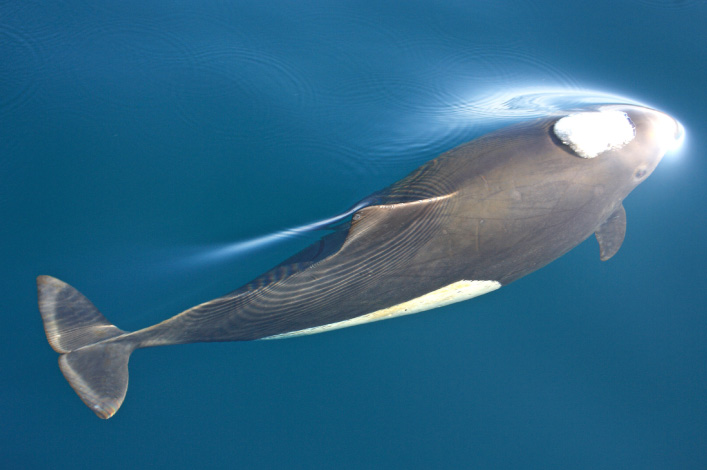
Suborder: Odontoceti, Family: Phocoenidae
Dall's porpoises are physically mature at about 2.3 m (7.5 ft) and the largest among porpoise species. The distinctive characteristic is that their fin is small for its size of body and head. Dall's porpoises are mostly grey-black and have white to grey patches on the belly and the back of the pectoral fin, which makes them look like killer whales. They're highly active swimmers and can swim at speeds up to 55 km (34 miles) per hour. They live in small groups and are commonly seen approaching boats, swimming and jumping.

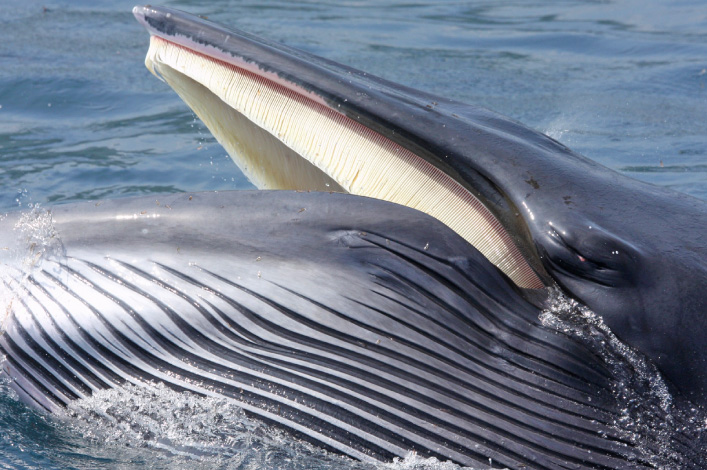
Suborder: Mysticeti, Family: Balaenopteridae
Minke whales, the second smallest baleen whale, measure an average of 7 m (23 ft). There're also called lesser rorqual. They have long been known to take variety of food items including codfish, herring, and krill. Minke whales are highly reproductive, which makes them unique among other baleen whales.

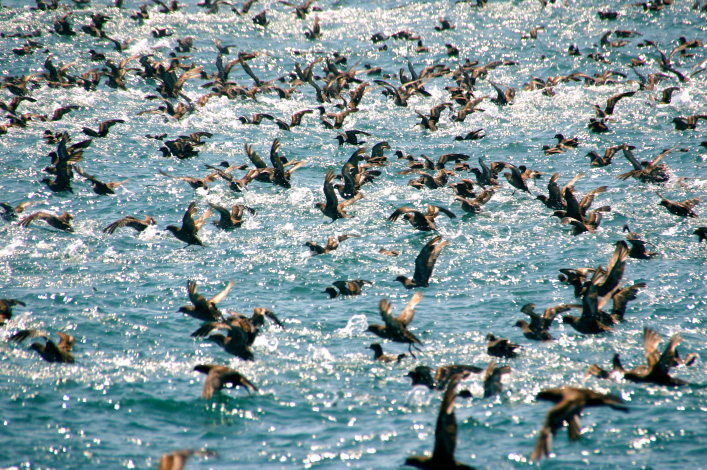
Order: Procellariiformes, Family: Procellariidae
Short-tailed shearwaters measure about 40 cm (16 in) in length with a 100 cm (39 in) wingspan. They're entirely dark brown and the size is almost half the one of short‐tailed albatrosses. Around from late April to August, both parent and young short-tailed shearwaters migrate to Nemuro Strait from Tasmania in large groups. The number counts up to several tens of thousands. The moment the flocks of them fly up in the air all at once is absolutely overwhelming.

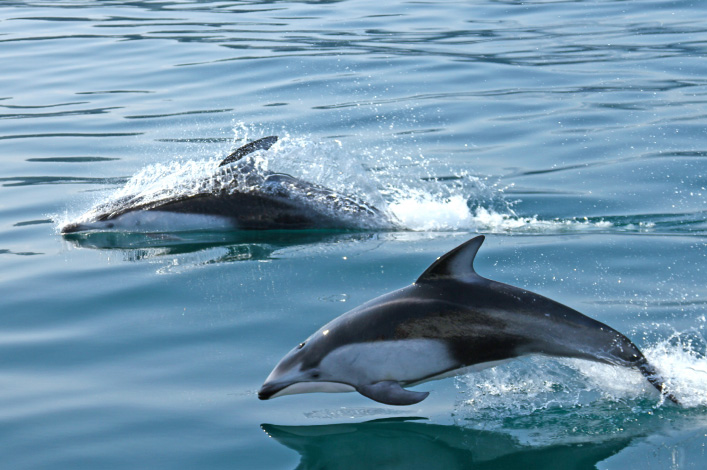
Suborder: Odontoceti, Family: Delphinidae
Pacific white-sided dolphins have a characteristic appearance with a short beak and head. They have a long pectoral fin and a dorsal fin looking like a mowing sickle, which makes them called "Sickle Dolphin" in Japan.

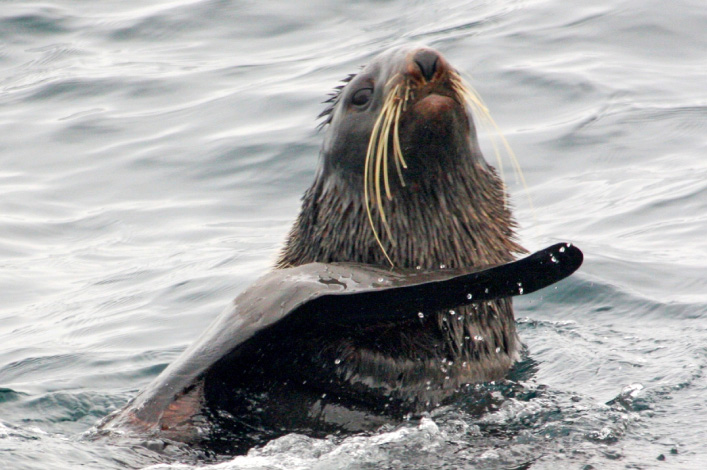
Suborder: Caniformia, Family: Otariidae
Fur seals have the unique characteristics of the Otariidae family: external ear flaps, the ability of using all four flippers to walk on land, and flapping their front flippers like a bird to swim. They mainly feed on fish, but some studies have reported that they sometimes eat penguins as a part of their diets.

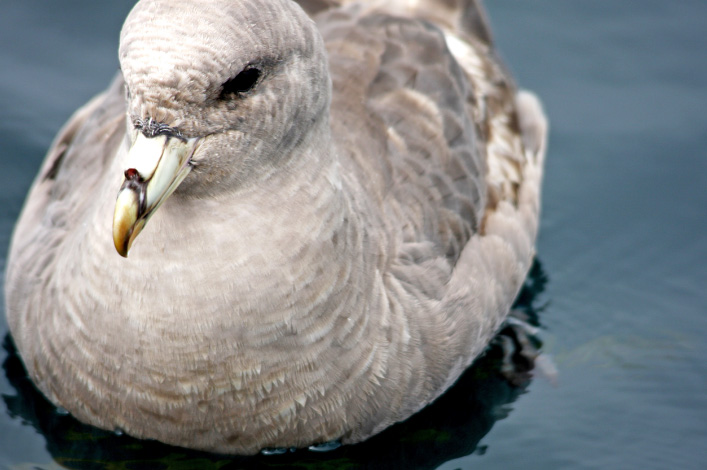
Order: Procellariiformes, Family: Procellariidae
Northern fulmars are physically mature at about 45 to 50 cm (18 - 20 in) in length. The name is originated from a Norwegian word "fulma" meaning smelly seagulls because the Procellariidae family members including Northern Fulmar take defensive actions by spitting fluid when they feel they're in danger. They, out of nowhere, tend to gather at the stern when ships are anchored.

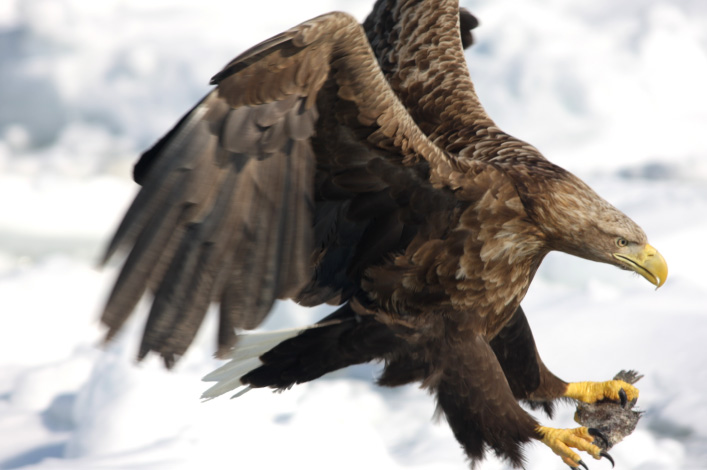
Order: Accipitriformes, Family: Accipitridae
White-tailed eagles are very large species of eagles which measure about 80 cm (31 in) in length with an average wingspan of 2 m (6 ft 6 in.) They're mid-brown overall. They have a yellow bill and a relatively short and white tail. Most of white-tailed eagles wintering in Japan fly to Hokkaido, but the number is only several hundreds since the overall population in Japan is small. The diet is made up of fish and other bird species, and they sometimes fight with sea eagles over prey.

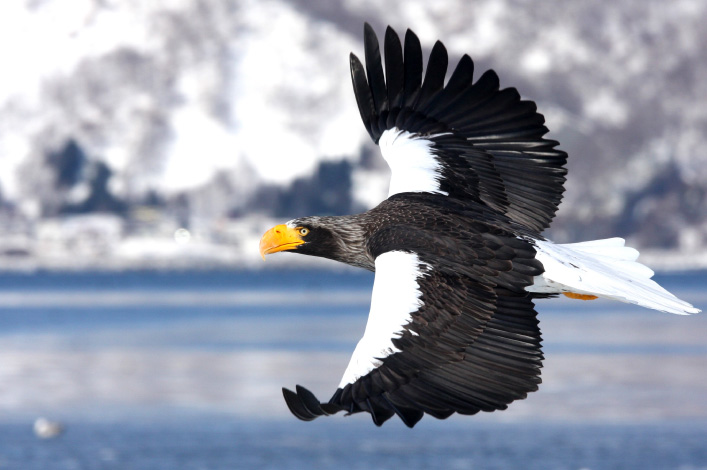
Order: Accipitriformes, Family: Accipitridae
Male Steller's sea eagles measure about 90 cm (35 in) in length, and females are larger than males, with average length of 100 cm (39 in.) They're large species of eagles whose wingspan is over 2 m (6 ft 6 in.) The overall body is dark brown while a part of wings and tail is white. One of their distinguish characteristics is the big yellow bill. Steller's sea eagles feed on large fish species such as salmon and trout. They're often seen at Nemuro Strait during drift ice season. The Steller's sea eagle has been designated as a Natural Monument in Japan.

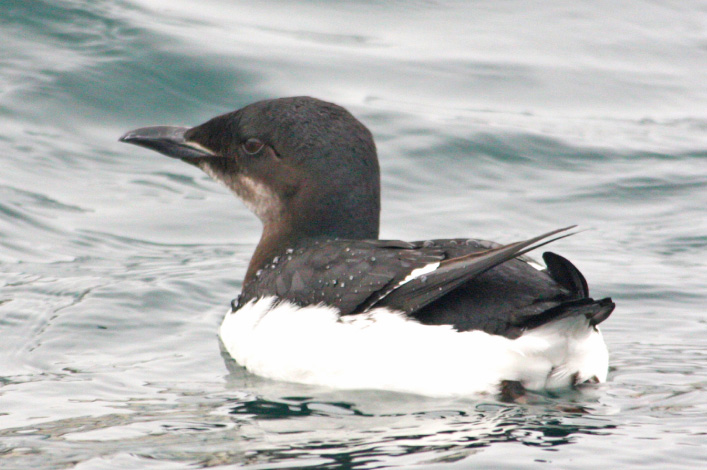
Order: Charadriiformes, Family: Alcidae
Brunnich's Guillemots measure about 45 cm (18 in) in total length, smaller than crows and slightly larger than common murres. Their back part is black and belly is white in breeding plumage, and the underparts get white up to the throat in non-breeding plumage. The feather color and the ecology of Brunnich's Guillemot are similar to those of the common murre, but they differ from the common murre that they have a bill with white stripe, the white of the breast meets the throat in a sharp inverted "V" in breeding plumage, the head is almost entirely black in non-breeding plumage.

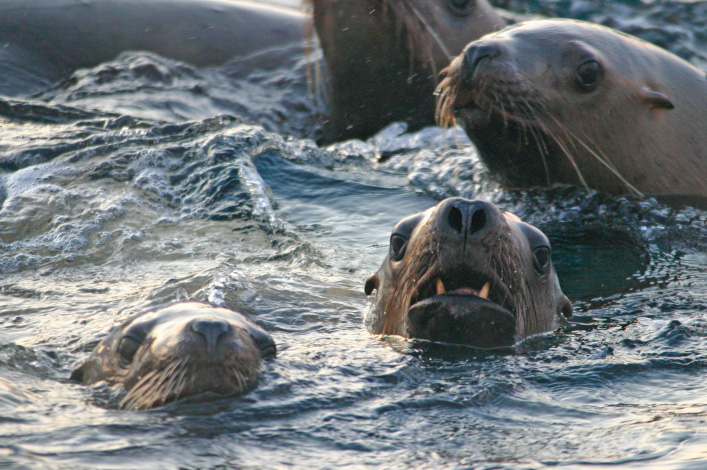
Suborder: Pinnipedia, Family: Otariidae
The Steller sea lion is the largest member in the eared seal family. On average, adult males measure about 3 m (9.8 ft) in length and weigh 670 kg (1,477 lb) while adult females measure about 2.3 m (7.5 ft) in length and weigh 270 kg (595 lb.) They're light brown and have 5-cm short tusks. The personality is cautious.

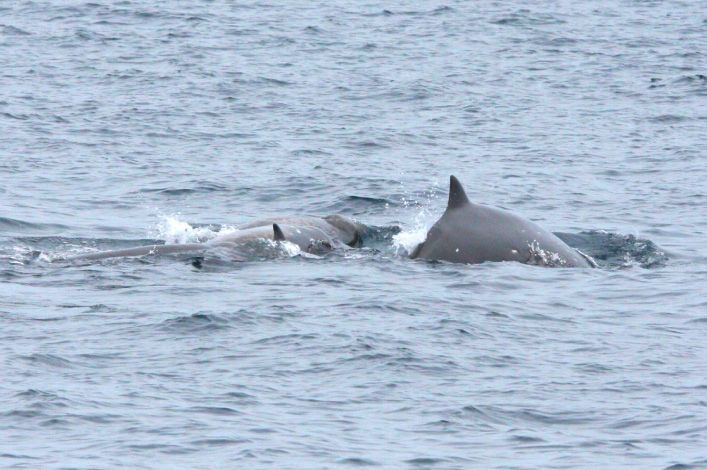
The Sato's beaked whale was reported as a new species on August 30, 2019. The chance to encounter them is very low, but they have been seen floating in the sea. There're still many unidentified facts about them.

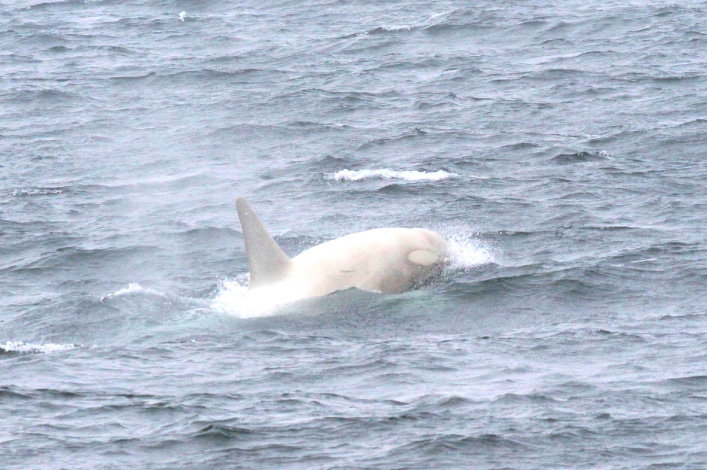
They have been reported twice in May and July, 2019 (very first discovery in Japan.) Those two reports indicated that they're two different individuals because the descriptions varied in the dorsal fins and the size.

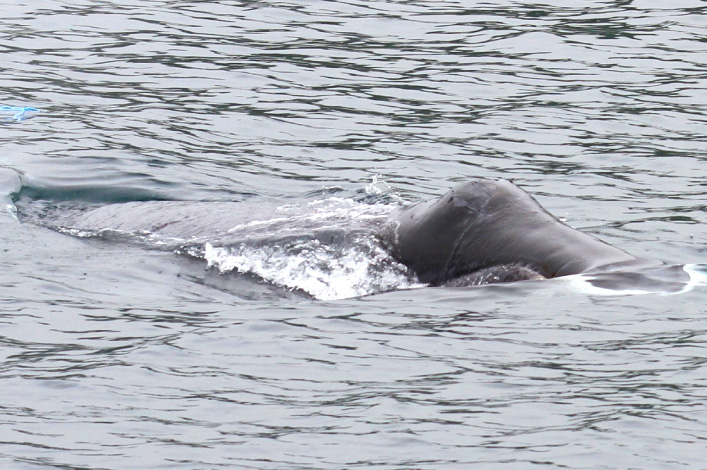
It was reported for the second time in Japan in 2015, and the first report came out 50 years ago. In both cases, the report date happened to be the same, June 23!
